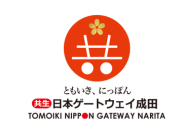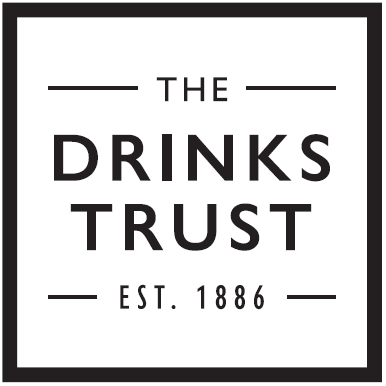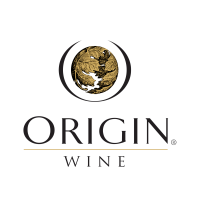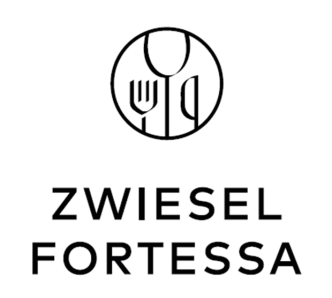When the wines at the 2025 International Wine Challenge were finally unveiled, the biggest surprise was in the English still wine category.
It wasn’t the high quality of the Chardonnay and Pinot Noir that stunned the expert judges – it was the fact that the top English red and white wines came from the same producer: Devon-based Lyme Bay Winery. It’s the first time an English winery has ever won trophies for red and white wines in the same year.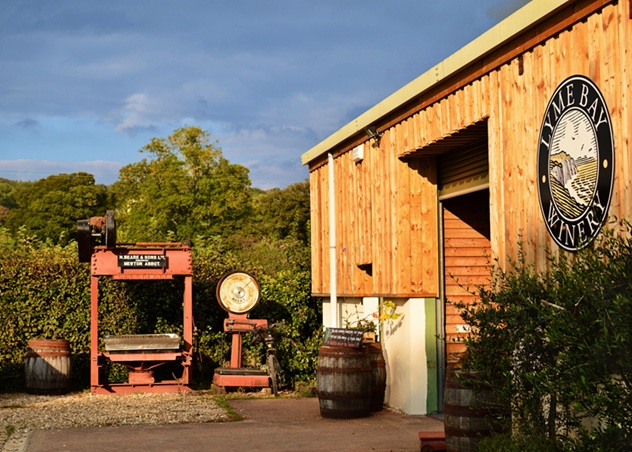
This is a winery that produced 200,000 bottles last year but doesn’t own a vineyard. Instead, it has long-term contracts (ten years or more) with 14 growers across southern England (mostly in Essex, but also in Kent, Herefordshire, Devon and Oxfordshire).
The Chardonnay, which won trophies for Best English Chardonnay and Best English White Wine, comes from a single parcel in Martin’s Lane, in Essex’s revered Crouch Valley region. The Pinot Noir, which won trophies for Best English Pinot Noir and Best English Red, comes from five parcels, including Martin’s Lane.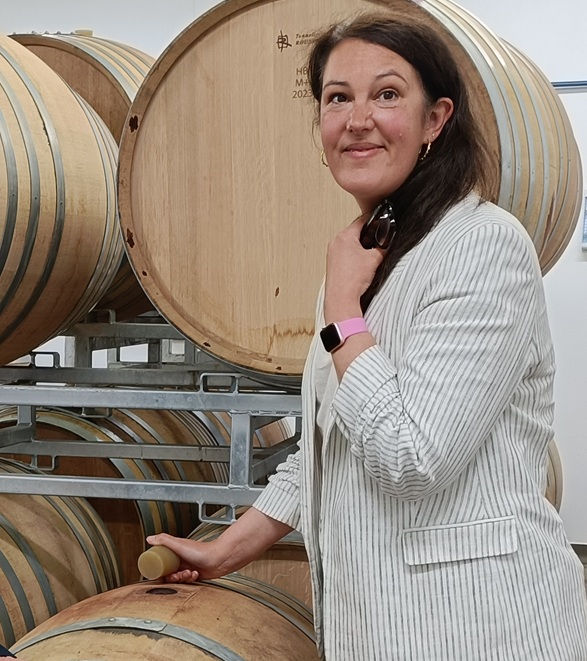
Clem Yates MW (above), who took over winemaking duties from James Lambert at the beginning of this year, believes Martin’s Lane is the best spot in the UK for Chardonnay and the Crouch Valley is the best region for still wines in England. After blind-tasting the Chardonnay, the judges at the IWC exclaimed: “Burgundy, eat your heart out!”
Lyme Bay Winery has grown from a cider and fruit wine business to a prestigious wine producer achieving its stated goal of making “the best wines from the best fruit grown by the best growers in the best locations”.
I visited the winery in Axminster, on the border of Devon and Dorset, to meet Clem and uncover the secrets of these two amazing English wines.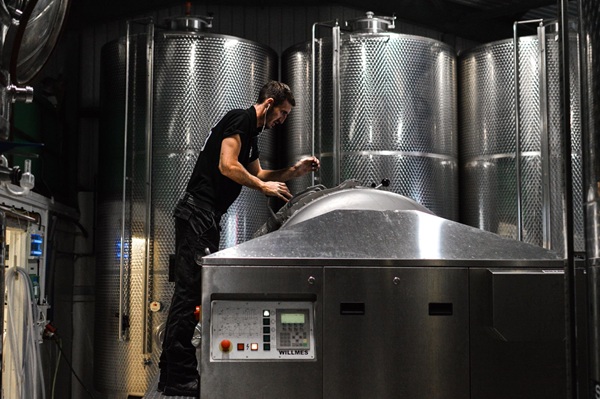
When I visit a winery, I like to see what the staff are doing on that day. I think it gives a snapshot of the business. Here, I was truly impressed. The 30 employees were engaged largely in three activities, which paint an impressive picture of the enterprise:
- Those who didn’t have a wine qualification were taking their WSET Level 2 exam upstairs.
- Others were bottling a wine for supermarket Aldi or preparing for a BRC audit (a comprehensive assessment of a company's adherence to food safety standards, namely BRCGS – Brand Reputation through Compliance of Global Standards).
Lyme Bay Winery produces a range of 12 wines – seven still and five sparkling. About 20% of its business is contract. Clients include Devon’s Lympstone Manor Estate, the Michelin-starred restaurant and hotel which produced England’s best Pinot Noir in IWC 2023. 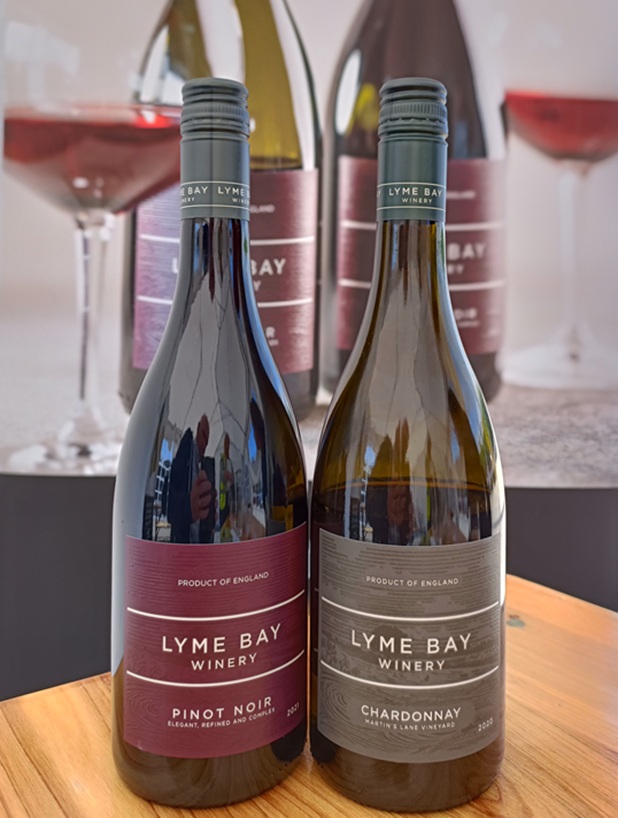
When Lyme Bay’s founder Nigel Howard and James Lambert switched the focus from orchards to vineyards – planting their first vines in Devon and Dorset in 2009 and 2010 – the aim was to produce world-class still wines. By focusing on clonal and site selection, and grower relationships, Lyme Bay has been able to craft still wines of balance and finesse, from elegant Bacchus to textural Chardonnays and vibrant Pinot Noirs – turning the perception of English still wine from a curiosity into a serious contender.
They have since sold their vineyards, but the focus remains on putting still wines centre stage.
The winery’s first still Pinot Noir – from the 2020 vintage – was met with critical acclaim. This wine went on to win a gold medal at IWC 2022, while the Chardonnay 2020 collected a silver. The following year, the Martin’s Lane Chardonnay 2020 won a gold medal and was named Best English White, while the Pinot Noir 2021 took a silver.
Last year, both the Chardonnay and Pinot Noir from 2021 gained silver medals.
A key part of their success is due to Lambert’s insistence of sourcing grapes from Burgundy clones (rather than clones planted for sparkling wine, where the focus is on acidity and structure). For instance, they like Pinot Noir clones that produce lighter, more aromatic, or earlier-ripening fruit, and Chardonnay clones with higher flavour concentration and phenolic complexity. For other insights into their success, I sat down with winemaker Clem Yates MW and a glass of Chardonnay and Pinot Noir.
Q&A with new winemaker Clem Yates MW
Canopy: Will you change anything?
Clem: “Having won four trophies, I think the answer would be: ‘We won’t be changing anything.’ We are going to keep our focus on the quality and keep more of those single-vineyard plots separate.”
Absolutely no changes or tweaks from you?
Clem: “Not that I’m going to give away.”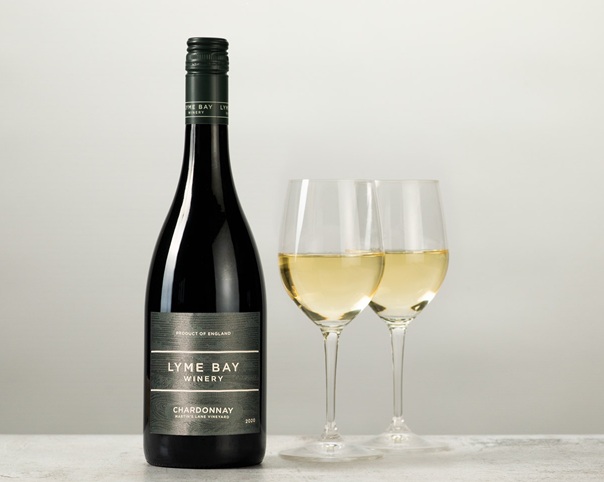
The Martin’s Lane Estate Chardonnay, from the warm 2020 vintage, was hand-harvested on October 15 and fermented in new 400L French oak barrels at cool temperatures using selected Burgundy yeast strains “to enhance fruit, complexity, and weight”. After full MLF, the wine underwent 10 months of lees ageing with regular bâtonnage “to accentuate the natural weight and ripe fruit, creating a complex and textural style of Chardonnay”. As we taste the wine, I ask Clem if this is the right amount of oak for an English Chardonnay or if she is going tweak that a bit?
Clem: “I think you have to be really conscious of your oak use on a yearly basis. There’s no recipe to making wine so if the grapes are really lovely and ripe and have this flavour, you can use a little bit more oak. In some of the cooler years, when the grapes don’t have as much character, then you have to rein in the oak use. But, for me, I think this is so beautiful. It’s got dominant oak characteristics, but it’s still got real elegance and class to it. And the fruit absolutely stands up to match the level of oak in this.”
Are you going after a Burgundian style here?
Clem: “Every winemaker of Chardonnay and Pinot Noir probably wants to emulate that Burgundian style because it’s so famous around the world. For me, the hallmark of English wines is the acidity. We have naturally higher acidity than they do in France. But I love the savouriness and the elegance and the kind of persistence of flavour which are some of the characteristics you find in Burgundian wines.”
When I first started tasting English sparkling wines, producers were trying to emulate Champagne. But now there’s an English style coming through. Do you think the same will happen with the still wines – that you’re trying to emulate Burgundy now, but slowly an English style will emerge?
Clem: “Absolutely. There will be an evolution as we learn and as the vines get older, and we get some more complexity into the wines. I think you’ve always got to set out a direction you want to go in. So, absolutely, our direction is an icon level Chardonnay wine. Where we end up hopefully is somewhere that someone really enjoys drinking and actually champions the characteristics that you get from English-grown grapes.”
Is it an advantage not having a vineyard and being able to source your Pinot Noir and Chardonnay from all over the South of England?
Clem: “For still wines, I absolutely believe in sourcing grapes from around the UK as you need a much higher ripeness level in the grapes – because you have to really temper the acidity. Sourcing grapes from all over the UK gives us that flexibility. In great years, you can probably make still wines from a much wider region. But in the bad years, you need to be in the regions that have the climate that can ripen grapes to a level for still wines.”
Can anywhere in the UK touch the Crouch Valley for quality?
Clem: “I haven’t seen it yet.”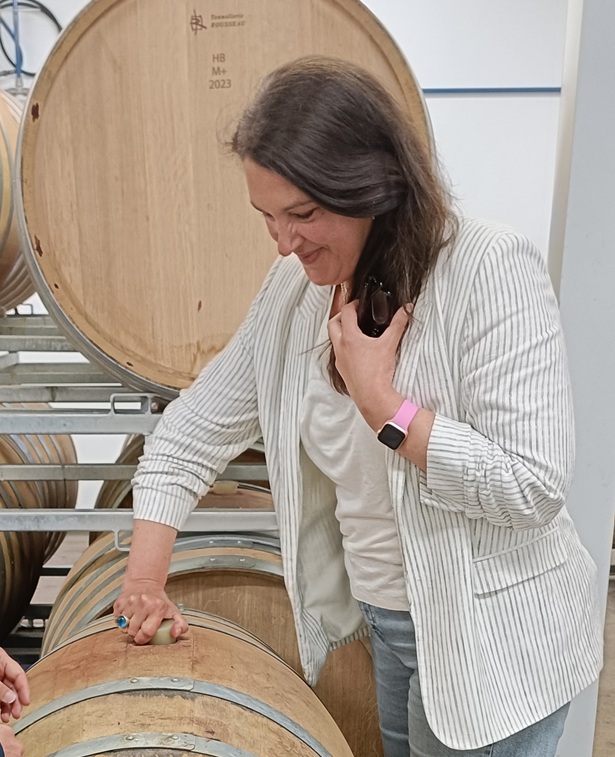
Lyme Bay seeks to make still wines from predominantly classic Burgundian clones such as Inra 76, 95, 96, and 809 and Fr 155 for Chardonnay and Dijon (and Spatburgunder) for the Pinot. But most of the Pinot Noir and Chardonnay that’s been planted in the UK are sparkling wine clones.
Clem: “We don’t use sparkling clones for still wine production, I think because you really see the acidity and the leanness that you need to make a sparkling base wine. And I don’t think you can cover that up with winemaking for still wine. But I’m sure there are people that do and make nice wines, but it’s not a new process that we have here at Lyme Bay.”
So, all the clones that are used in the Pinot Noir, for example, are Burgundian clones?
Clem: “When James and Nigel set the project up, they fundamentally went after the still wine production and they were lucky enough to be able to start from scratch. If I was to plant a vineyard today in the UK, I would look at still wine clones because I think that is really exciting and a growing side of the industry. And I would look at all sorts of varieties, like Albarino. Different varieties are going to bring even more life into the UK industry.”
Is it weird not having total control over your own vineyards?
Clem: “I’m not a grapegrowing expert; I never have been. I studied winemaking and I can make wine, but I can’t grow grapes. I don’t claim to have that skill. And I think in a marginal grapegrowing climate that we are, you really need that expertise. And so, I’ll leave the experts to grow the grapes and I will make the wine.”
What do you think these two gold medals and four trophies will do for English still wine and Lyme Bay in particular?
Clem: “I’m just so excited for the team. All their hard work, effort – it’s a huge reward for them and I’m really delighted for them.
“For Lyme Bay, it’s a massive accolade to their vision and all the heart. This has been years in the making and it’s absolutely amazing to be recognised by our peers in the industry for the quality that they’ve managed to produce with these Pinots and Chardonnays. For the industry, it’s just so exciting. We need to really shine a light on the industry as a whole because an agricultural industry in the UK is tough.
“And so to be winning awards like this is really an exciting time. That’s where we’re going and that’s where we see the vision of the business really.”
The Pinot Noir, from the cooler 2021 vintage, was hand-harvested from October 26 to November 3. Small-batch, open-top fermentations were undertaken with 10% whole bunch and manual punchdowns up to three times a day “to gently maximise the extraction of colour, flavour, and structure”. The wine was then transferred to barrel for full MLF. Ageing for 11 months was in 32% new French oak plus some older barrels from France, Eastern Europe, and America. The wines from the barrels were then blended, left to settle for several weeks and bottled without fining and only a light filtration “to retain the delicate nuances of the fruit and oak”. As we taste the Pinot Noir, Clem comments…
Clem: “Pinot Noir is genetically unstable so it can have very different characteristics when it grows to what you expect it to have or what you wanted it to have in the vineyard. And then when you ferment it, it's really temperamental. It will get really hot and it will try and run away with you or it just won't ferment. It's one of the hardest grape varieties to work with. It's a pesky little devil. A real pesky devil.
“When I taste Pinot Noir, I have such high expectations and I’m nearly always disappointed. You chase that expectation of what Pinot Noir should smell and taste of. For me, the Lyme Bay Pinot always absolutely delivers on the characteristic that you're hoping for.
“Once again, I’m not looking to change much. I think for me the exciting thing that I really get in the Pinot, specifically from Lyme Bay, is like a cracked black pepper note and I get that on the nose of this.”


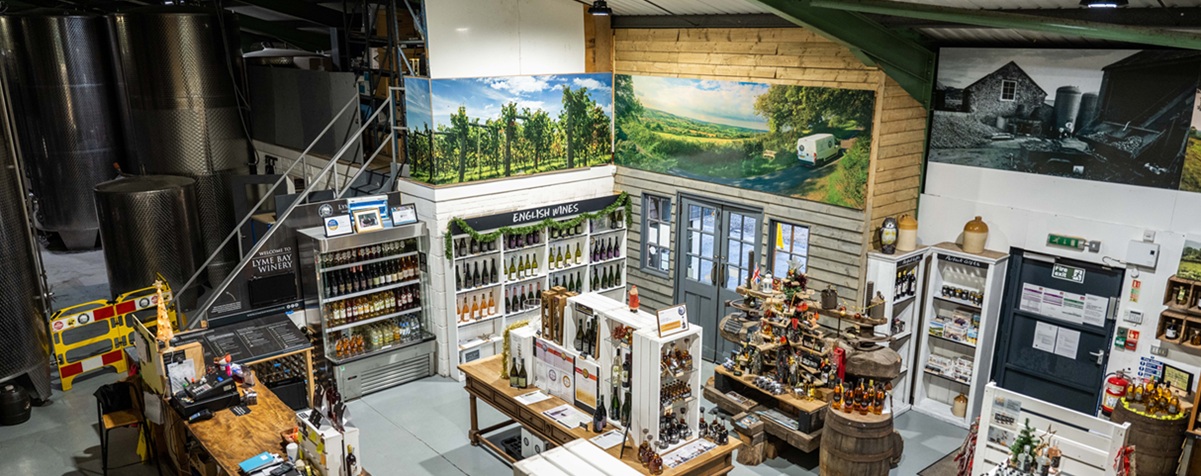




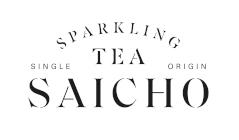

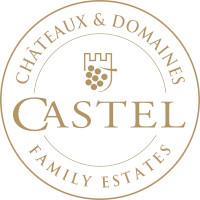


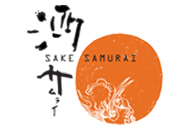
.png)
